How to Make Your Home More Wildfire-Safe
Air Date: Week of October 20, 2023
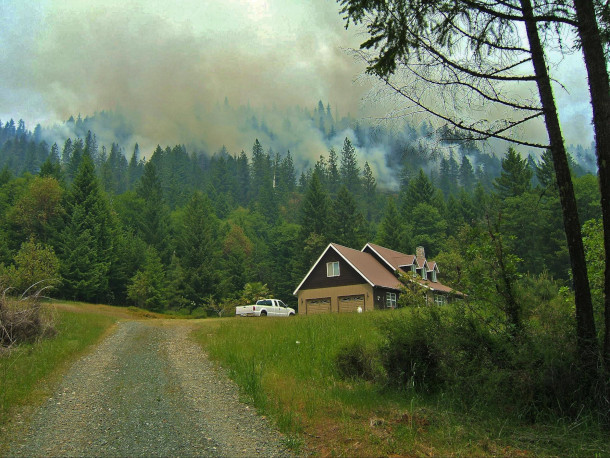
The wildland urban interface, or the transition zone between unoccupied land and human development, is especially vulnerable to forest fires. (Photo: Bureau of Land Management, Flickr, CC BY 2.0)
When a wildfire powered by extreme heat and drought nears a neighborhood, all it takes is a single spark to send homes up in flames. John Fernandez is a professor of architecture at MIT and joins Host Jenni Doering to share some steps homeowners and renters alike can take to reduce that risk.
Transcript
DOERING: More people than ever live in what’s called the Wildland-Urban interface, where forests and human settlements converge. Meanwhile, intense heat and drought driven by climate change are fueling extreme wildfire conditions like those seen this year in Maui and Italy. And when a forest fire gets out of control close to homes, all it takes is a single spark, or even just the intense heat the fire puts out, to send a home up in flames. But there are steps that homeowners and renters alike can take to reduce that risk and hopefully save their homes. John Fernandez is a professor of architecture at MIT who directs the Environmental Solutions Initiative there and he’s here to share some of these tips. Welcome to Living on Earth!
FERNANDEZ: Nice to be with you.
DOERING: So what are some things that people who rent their house or maybe can't completely renovate their house can do to prepare for a fire?
FERNANDEZ: So there are a few things that you can do. And the most important thing is to reduce the fuel that's available between your house and the beginning of the forest, reducing the amount of objects that could ignite. That includes outdoor furniture, any plant material, so this is referred to as ladder fuel. So the material that would ignite and then lead to igniting larger plant material, and then eventually, you know, a tree that's right next to the house. And in fact, the fire in Hawaii was driven once it got into neighborhoods, by the prevalence of invasive grasses that are quite combustible and quite dense in their biomass and spread fire very, very quickly. So certainly not parking vehicles that have, you know, gas tanks, and that includes ATVs, motorcycles, cars, removing those from the space between the house and the forest edge is really important. So you can do a lot in terms of reducing fuel. And that goes a very, very long way, because it's really that fuel that acts as a bridge between a large forest fire and the house itself.
DOERING: And what are some other things that renters who don't necessarily have control over their home could do?
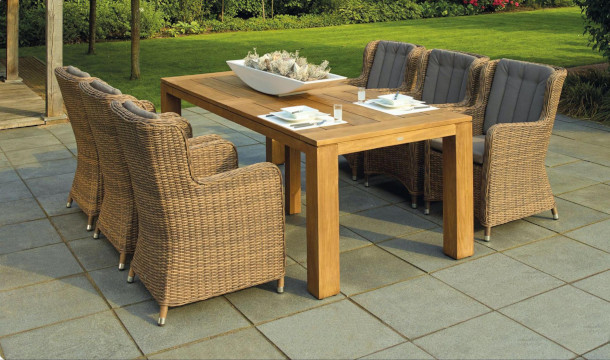
Reducing “ladder fuel” available between a house and the forest’s edge, such as outdoor furniture and plant material, is one of the most effective ways to protect against fire. (Photo: Marianne, Pexels)
FERNANDEZ: Yeah, so a very simple and effective thing that renters can do to reduce the possibility of fire from radiant heat, first of all, radiant heat will transfer through glass. And so if you have a very intensive wildfire, and it has to be really, really intense and close to the building, that radiant heat will transfer through windows and will ignite drapes, and furniture and other combustible materials close to that window. So a really simple thing to do is to open the drapes, make sure that it's not adjacent to the glass, and then any furniture that can be moved towards the center of the room and away from windows will reduce the possibility that that furniture will ignite spontaneously.
DOERING: So those are some great things that people can do maybe if they're renting a house. What are some materials decisions and structural decisions that homeowners who are maybe like making bigger changes to their house could make that might help protect against wildfire?
FERNANDEZ: So certainly, if you have design decision over the house, then it's you know, reducing the combustibility of the exterior facing of the house. So any wood material, so wood siding, shingles, will be susceptible to ignition compared to any material that has a cement base. So there are products that are like wood siding, they can be shingles or siding, or even large panels, that are cementitious, they have cement, and they're composed of some cellulose fiber but not enough to combust, that is much more resistant to fires. Certainly metal panel to reflect the heat and also non combustible. And the roofing material. Again, the same goes for roofing materials. A metal roof is preferable to anything else. But if you can't afford that, it is a little bit more expensive, non combustible tiles. And just inform oneself about the fire rating of those materials. A few other things one can do is you know, many house fires start because embers are driven into the house, either underneath the house. So the crawlspace is a real weak link in many houses. You can have a house that's completely clad in metal, but if the crawlspace is open, and then the underside of the crawlspace are wood joists, and then you get embers that are blown into that space, then those embers are going to lead to ignition of those joists in the crawlspace. So lining a crawlspace with a material, a latticework, a metal latticework, some kind of wire that keeps those embers from being driven below the house is really important. And then sealing any vents. So again, putting some kind of screening or wiring over vents. Those are decisions that a homeowner can make, that are reasonable to make, if you're concerned about being too close to the forest edge. If you can be further than 30 feet, if you can push the forest back, thin the forest back, a hundred foot buffer is a rule of thumb best practice, but a lot of situations don't allow that.
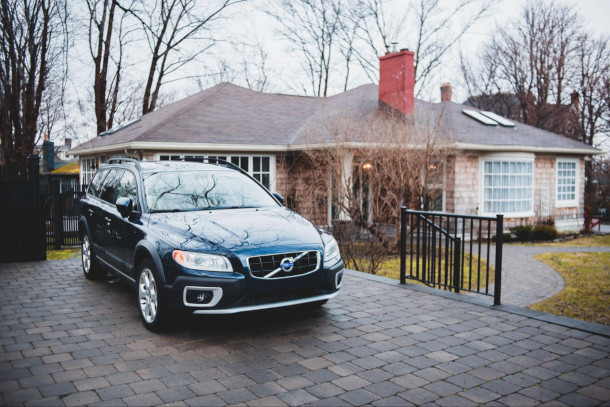
Residents can also move cars, motorcycles, and other vehicles with gas tanks as far away from the forest as possible. (Photo: Erik Mclean, Pexels)
DOERING: So these are some great ways that homeowners and renters can take action to reduce their fire risk. But of course wildfires that are so catastrophic, like the one that we saw in Maui this year, are becoming more and more common. How can we get at the root of this crisis in the first place?
FERNANDEZ: Yeah, it's a great question. You know, we're in an era in which the kinds of decisions that are made in planning and development of residential neighborhoods and new towns needs to be rethought. The wildland urban interface is a much riskier place today than it was even just five years ago, and certainly ten years ago. So I think at the highest level, states and counties, certainly the federal government, needs to play a role in advising, and in some cases, limiting the kind of development that would continue to increase the number of houses, the number of, of people living in the wildland urban interface, who are at risk. Especially of massive fires, those that are just completely not controllable, they're absolutely runaway fires, and nothing can be done when they reach a neighborhood or a group of houses. We really do need to start thinking about planning in the geological epoch that we've entered into, the Anthropocene, of uncertainty and extreme events. In the actual planning of the development itself, and the layout of streets and the placing of houses, we need to design with wildfires in mind from day one. So the kind of landscaping that is planned for, you know, using other types of materials than plants to landscape with, gravel, tiles, again, from the inception of the design of the development.
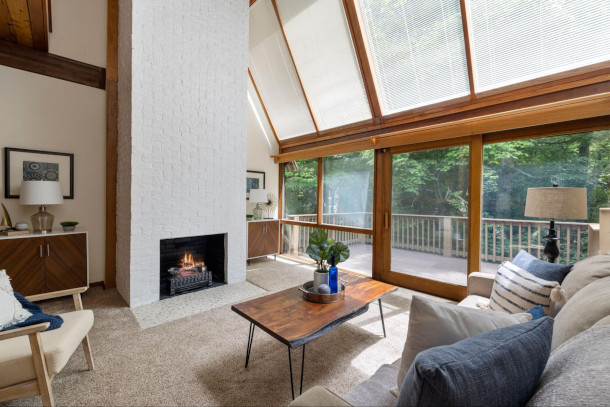
Even moving furniture away from windows acts as a precaution. When a wildfire is very close, radiant heat can ignite flammable objects through glass. (Photo: Curtis Adams, Pexels)
DOERING: Professor, it's well known that trees and other plants in neighborhoods actually really help reduce the extreme heat that we're seeing in this era of climate change. But it sounds like those can also be a liability in terms of wildfire risk. How can we balance those two needs?
FERNANDEZ: Yeah, that's a really good point. It's a trade off. It is important to be able to shade especially hard surfaces to reduce the amount of heat that's absorbed by concrete, asphalt, as well as the fact that small trees, shrubs and other plant materials also are, of course, cycling water through them, and therefore, can be sources of evaporative cooling. And so a general cooling effect on the microclimate is important. It's particularly important in very dense urban environments. So where you have tall buildings, lots of air conditioning, lots of impermeable surface, roads and sidewalks, it's important to have as much tree cover as possible, so urban tree canopy. In a small town or a development within a forest, the forest itself is providing a lot of cooling to that area. And so I think it's a trade off between limiting the amount of fuel that's available to a fire that may enter into a neighborhood. Also managing those plants so that any dead branches, dead shrubs are cleared away. But it's going to be a trade off. And I think people should be really smart about the density of plant material to limit the fuel available for a fire.
DOERING: How hopeful are you about being able to reduce these risks so that people can live safely in the wildland urban interface?
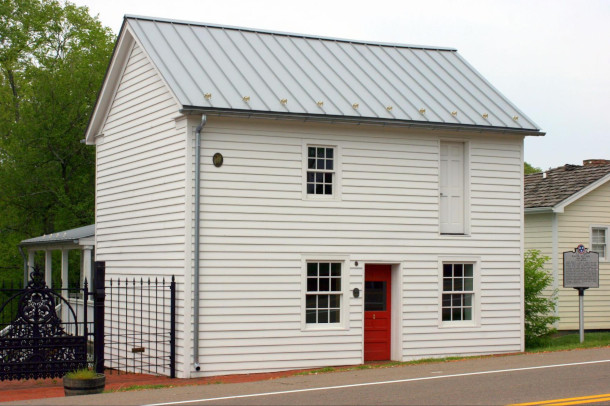
Homeowners can consider more fire-resistant external materials, like metal roofs. (Photo: Brent Moore, Flickr, CC BY-NC 2.0)
FERNANDEZ: So for most fires, which are not the massive runaway fires, in wildland urban interface situations, you know, they are fires that can be managed. There's a lot we've already talked about that the homeowner, and the neighborhood can do to protect from the various ways in which materials ignite. So I am hopeful that we can do much, much better, and in doing much better, likely reduce the kinds of situations we've seen where neighborhoods are completely overrun, and residents have absolutely no option but to flee. Having said that, I am concerned that there is still an increasing number of people willing and interested to live in these places. And the deeper you go into the forest, the more problematic the situation is. So I think there does need to be a reckoning in society generally, but also in terms of the way in which the federal and local governments really contend with these situations and try to nudge development towards situations that are safer. But again, we need to shift our perspective from thinking about our present as more like the past, than it will be like the future. And the future is all about climate change. And the future is already here.
DOERING: John Fernandez is a Professor of Architecture at MIT and directs the MIT Environmental Solutions Initiative. Thank you so much.
FERNANDEZ: Thank you.
Links
What is the wildland urban interface?
Resources for preparing for wildfires
“Nature” Journal article: The Global Wildland Urban Interface
Living on Earth wants to hear from you!
Living on Earth
62 Calef Highway, Suite 212
Lee, NH 03861
Telephone: 617-287-4121
E-mail: comments@loe.org
Newsletter [Click here]
Donate to Living on Earth!
Living on Earth is an independent media program and relies entirely on contributions from listeners and institutions supporting public service. Please donate now to preserve an independent environmental voice.
NewsletterLiving on Earth offers a weekly delivery of the show's rundown to your mailbox. Sign up for our newsletter today!
 Sailors For The Sea: Be the change you want to sea.
Sailors For The Sea: Be the change you want to sea.
 The Grantham Foundation for the Protection of the Environment: Committed to protecting and improving the health of the global environment.
The Grantham Foundation for the Protection of the Environment: Committed to protecting and improving the health of the global environment.
 Contribute to Living on Earth and receive, as our gift to you, an archival print of one of Mark Seth Lender's extraordinary wildlife photographs. Follow the link to see Mark's current collection of photographs.
Contribute to Living on Earth and receive, as our gift to you, an archival print of one of Mark Seth Lender's extraordinary wildlife photographs. Follow the link to see Mark's current collection of photographs.
 Buy a signed copy of Mark Seth Lender's book Smeagull the Seagull & support Living on Earth
Buy a signed copy of Mark Seth Lender's book Smeagull the Seagull & support Living on Earth

